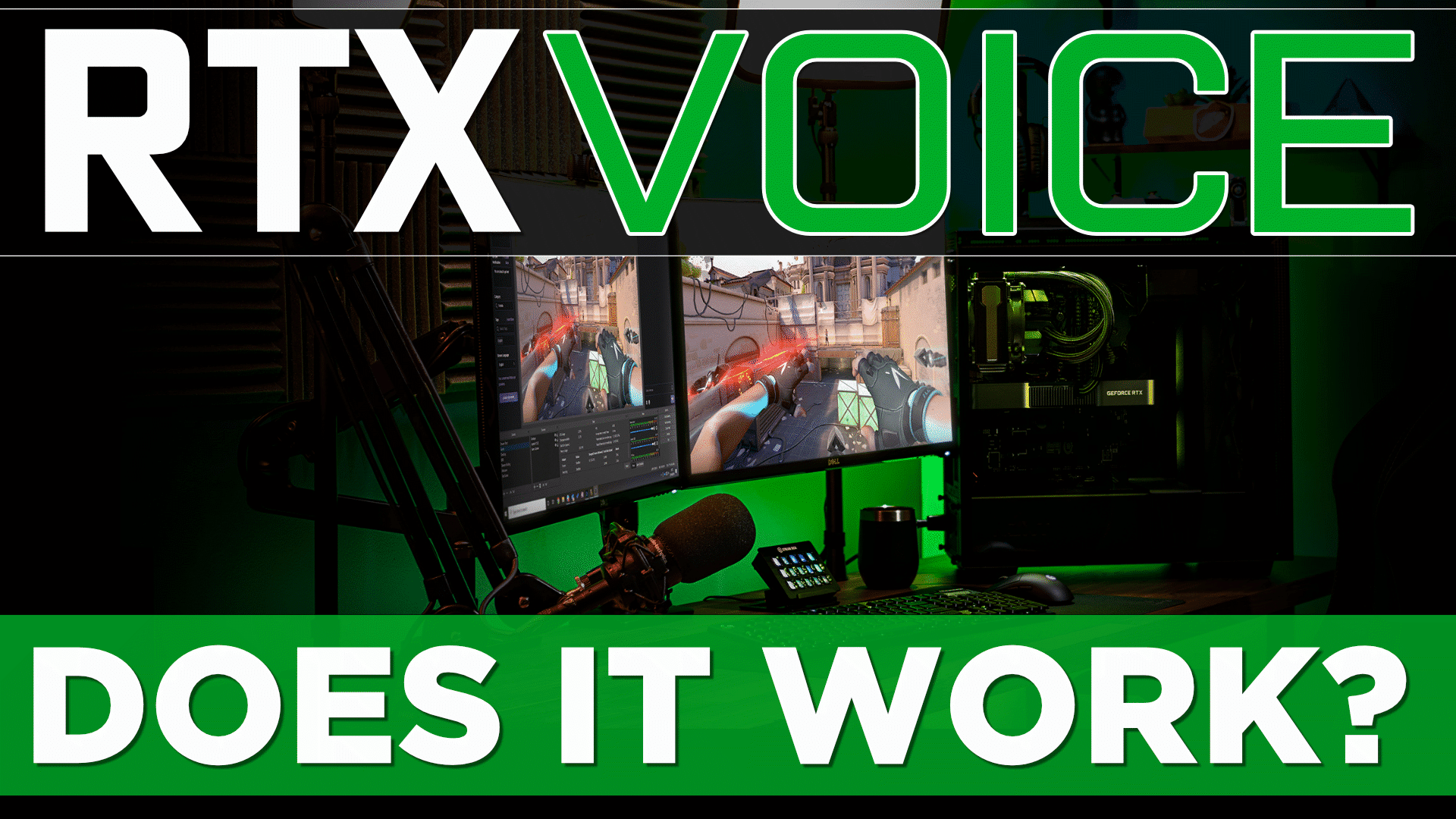

- #Rtx voice alternative for amd how to
- #Rtx voice alternative for amd drivers
- #Rtx voice alternative for amd full
- #Rtx voice alternative for amd code
(Image credit: Future) Setup How to set up Nvidia RTX Voice
#Rtx voice alternative for amd full
Hopefully Nvidia will reconsider its position for the full release-or at least leave the back door found within the beta open-because RTX Voice could really make a difference for a whole lot of people right now. In saving some older graphics cards from potentially disappointing performance, Nvidia has inadvertently shot itself in a foot by taking away its users' agency to make that decision for themselves. It has, however, been needlessly limited to the latest generation of graphics cards. It's an outstanding implementation of AI noise removal, and as a free tool it's wholly welcome during a period of global adaptation. So is RTX Voice a success? Technically, yes. User reports anecdotally suggest that older generations of Nvidia graphics cards may be hit even harder by RTX Voice, and we'd guess that's due to AI operations weighing down the rendering pipeline to a greater extent without Pascal's streamlining. The GTX 1080 is hit the hardest by RTX Voice and drops 15% in the benchmark with the feature turned on.īut it's not a colossal difference between the two, and the performance impact can easily be swallowed by high-end Pascal cards. RTX Voice performance is disproportionately weighted against the GTX 1080, suggesting that there is some acceleration going on behind the scenes that's utilising the Turing architecture's enhancements in one way or another. With RTX Voice enabled and Audacity capturing the RTX Voice microphone output, I've run a 3DMark Time Spy run across both graphics cards. I've setup a homemade benchmark in order to test the impact RTX Voice would have during an intensive rendering task, such as playing a game. Luckily that's all I need to see how RTX Voice impacts the Turing and Pascal architectures, and shine a light as to whether Tensor Cores are necessary for this AI workload. I've only an RTX 2080 and GTX 1080 to hand today.
#Rtx voice alternative for amd drivers
Nvidia claims its most recent drivers are required for RTX Voice to operate, too.
#Rtx voice alternative for amd code
With only a small adjustment to the code RTX Voice will work on older graphics cards-simply delete the segment that says you can't run it without an RTX graphics card. It's not your fault, Nvidia does dance around the subject a bit.

You might think the latter would be required for RTX Voice. The RT Cores accelerate ray tracing workloads, while the Tensor Cores are used for AI workloads-such as DLSS or denoising ray-traced scenes. The latest architecture to grace GeForce graphics cards comes with two new additions to the silicon: RT Cores and Tensor Cores. There's also the fact that RTX Voice may not be utilising the Turing architecture's AI capabilities to their fullest. You can lend Nvidia a hand with improving the AI-it only takes 15 seconds. And we shouldn't forget this is a beta-Nvidia is actively seeking feedback for improvement. I suspect Nvidia fast-tracked development of RTX Voice in order to meet the potential global demand for such an app. Perhaps that's something to do with its high quality output, but maybe it's simply not quite as optimised as its competition. In theory, that's a load lifted from the CPU and shared across the GPU's highly-parallel (great for AI) cores-but perhaps not in practice.īut when Krisp-both as a standalone app and via Discord-is often found hovering around the 2-3% CPU utilisation with no added GPU utilisation, it's clear that RTX Voice is the more intensive application. The workload is instead somewhat shared between CPU and GPU, and GPU utilisation bobs around the 1.1-1.5% mark during desktop testing. (Not my Core i7 9700K, anyways-your mileage may vary).

With CPU utilisation roughly 2-3% with the application enabled, it's fair to say that Nvidia's GPU-accelerated application isn't overwhelmingly intensive on CPU performance.


 0 kommentar(er)
0 kommentar(er)
